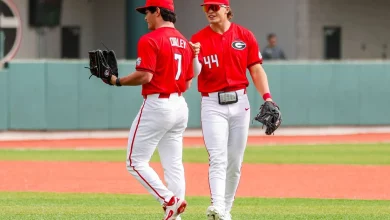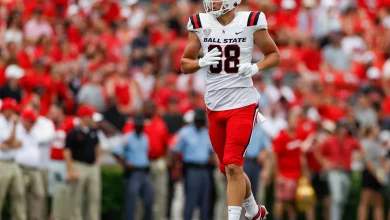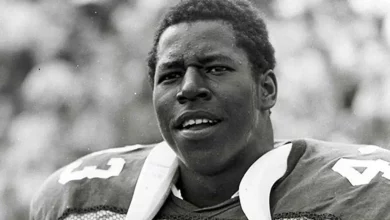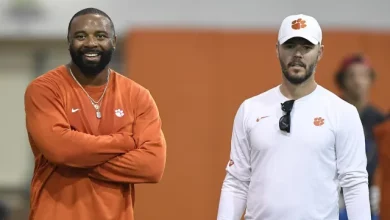A look at Canes players who are essentially competing with the transfer portal.
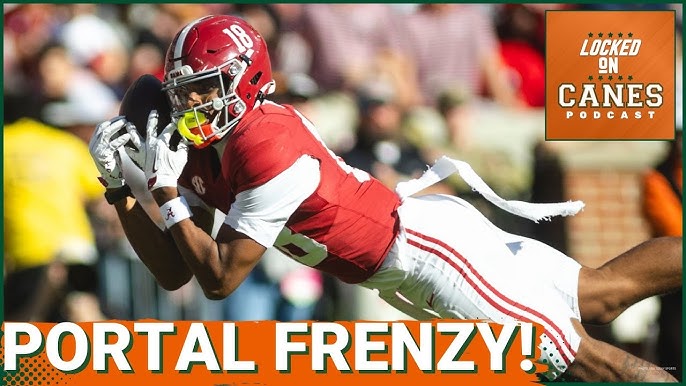
A Look at Canes Players Who Are Essentially Competing with the Transfer Portal
The landscape of college football has dramatically shifted in recent years, primarily due to the transfer portal. While it offers athletes a chance to move freely between programs and find the best fit for their talents and aspirations, it also presents a unique set of challenges for the players already at a given school. For programs like the University of Miami, the rise of the transfer portal has added another layer of competition, not just for spots on the roster but also for staying relevant and ensuring players get the exposure and opportunities they deserve.
At the University of Miami, or the “Canes” as they are affectionately known, the competition within the program is intense as players fight for their spots, knowing that any slip-up might push them toward the portal. In this article, we’ll examine how Miami players are dealing with the growing presence of the transfer portal and the competition it brings for roster spots. We will also look at specific players on the roster who are, in effect, competing against the portal to remain on the team.
The Transfer Portal: A New Reality in College Sports
In 2018, the NCAA introduced the transfer portal, allowing athletes to declare their intent to transfer between programs without facing significant restrictions. Prior to the portal, players had to obtain permission from their coaches to transfer, and in many cases, they had to sit out for a year before becoming eligible to play. The transfer portal fundamentally changed this process, giving players greater freedom and control over their futures.
In the past few years, this shift has had significant implications for college football. The portal has become a vehicle for athletes to explore better opportunities at different schools. Coaches are more willing to dip into the portal to strengthen their teams, while players are using it as a way to find the right fit for their development, playing time, and overall collegiate experience.
For programs like Miami, the portal has become both a blessing and a challenge. On one hand, the ability to bring in immediate talent from other programs can bolster the roster, and the Canes have been active participants in this process. On the other hand, the portal has created intense internal competition for players, as they know their place on the roster is not as secure as it once was. Players need to continuously prove themselves to not only their coaches but also to their own teammates, all while considering the risk of being displaced by incoming talent via the portal.
Miami’s Approach to the Transfer Portal
Under head coach Mario Cristobal, Miami has adopted a comprehensive approach to the transfer portal. Cristobal’s tenure at Miami is marked by a strong recruiting strategy, and the transfer portal is just one aspect of how he aims to bring the program back to prominence. Over the past few seasons, Miami has seen a fair amount of transfer activity, with high-profile players from other schools choosing to suit up for the Hurricanes. This influx of talent has changed the dynamic within the program, as both incoming transfers and current players now vie for playing time.
For Cristobal, maintaining a balance between developing talent from within the program and bringing in experienced players from other schools is crucial. The ability to add experienced players from the portal can provide immediate depth at key positions, especially when dealing with injuries or underperformance. However, this strategy also introduces heightened competition, and some players who have been in the program for several years might feel the pressure to outperform not just their teammates but also the newcomers.
Players Competing for Their Roles
At Miami, there are several key players who find themselves in a precarious position, as they compete not just against their teammates but also against the constant threat of incoming transfers. Some players, particularly those in positions with high turnover rates (like quarterback or wide receiver), may face more pressure than others to keep their roles secure. Let’s take a closer look at some of the players on Miami’s roster who are competing against the portal, essentially fighting to prove they belong in the program long-term.
1. Tyler Van Dyke (Quarterback)
Tyler Van Dyke, once viewed as one of the bright young quarterbacks in college football, has faced both praise and criticism during his time at Miami. After a standout sophomore season in 2021, Van Dyke’s 2022 season was less impressive, with injuries and inconsistent play hindering his performance. This has led to a situation where he must prove himself in 2023 to remain Miami’s starting quarterback.
With the ever-present possibility of a quarterback transfer entering the program through the portal, Van Dyke has had to maintain a high level of performance to keep the starting job. As one of the most important positions on the field, the quarterback spot is always vulnerable to competition, particularly in an era where the portal has allowed schools to seek more established quarterbacks from other programs.
Van Dyke has the talent to bounce back and secure his place as Miami’s leader under center, but his performance in the spring and fall camps will be critical. The Canes have already added new talent to the quarterback room, and if Van Dyke doesn’t show consistency, he could find himself in a battle for his position.
2. Jalen Rivers (Offensive Line)
The offensive line is an area where Miami has been looking for consistent play, and players like Jalen Rivers are key to solidifying the unit. Rivers, who was a high-profile recruit and has shown flashes of his potential, has struggled with injuries throughout his career at Miami. With the increased attention to the transfer portal and the Hurricanes bringing in several transfers to shore up the offensive line, Rivers finds himself fighting to secure a starting spot.
Given the importance of offensive line play and the fierce competition at the position, Rivers will need to prove that he can stay healthy and develop into a reliable player. Miami has brought in experienced offensive linemen, and Rivers has to show that he can outplay both the transfers and other returning players in order to earn a starting spot.
3. Xavier Restrepo (Wide Receiver)
Xavier Restrepo has been a steady contributor to the Hurricanes’ passing game, but wide receiver is a position that has become increasingly competitive due to the transfer portal. With the Canes adding high-level talent at the wide receiver position through transfers, Restrepo now faces a situation where he must fight to maintain his role in the offense.
While Restrepo has proven himself as a reliable target for quarterbacks, the Canes have added several transfers who could potentially challenge for starting roles. The addition of these players means that Restrepo has to continue to develop as a route runner and pass catcher, staying one step ahead in a position group filled with competition.
4. James Williams (Safety)
Defensive backs, especially safeties, are crucial to a team’s success, and James Williams has the potential to be one of the best in the ACC. However, Miami’s defensive backfield has seen a lot of movement recently, with multiple players transferring in and out. The Canes added new talent through the portal, which makes the safety position one of the most competitive on the roster.
Williams is talented, but the increased competition means he has to show that he can not only maintain his spot as a starter but also continue to improve his game. The added competition in the secondary forces Williams to evolve, ensuring that he remains an integral part of the defense.
5. Elijah Arroyo (Tight End)
Tight end is another position where Miami has been working to build depth, and Elijah Arroyo has the talent to be a star. However, the emergence of new players in the position group has put additional pressure on Arroyo to perform. The Canes added multiple transfers, and with the increase in competition, Arroyo faces a challenge to prove that he can remain the top tight end option.
Arroyo has the tools to be successful, but he must continue to develop his blocking and receiving abilities to maintain his position on the depth chart. The tight end position is critical in Miami’s offensive scheme, and Arroyo needs to stay ahead of the competition to remain relevant.
The Psychological Toll of Competing with the Portal
While the transfer portal has undoubtedly created a level of excitement and opportunity for players looking to move to different schools, it has also introduced a psychological toll on players who are already on a roster. The constant pressure to perform, coupled with the looming possibility of a new transfer coming in and taking their job, can weigh heavily on a player’s mind.
In the past, players knew they were competing for a spot within their team, but the addition of incoming transfers creates uncertainty. Players must continually prove themselves, not just in practice and games but in how they handle the pressure of knowing their roster spot is not secure. Miami players, like those at other programs, must manage this internal competition and maintain focus on their development, all while balancing the mental challenge of dealing with the portal’s impact.



